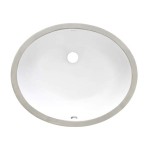Kitchen Island Designs With Sink: A Comprehensive Guide
The kitchen island has become a cornerstone of modern kitchen design, evolving from a simple workspace into a multifunctional hub for cooking, dining, and socializing. Integrating a sink into a kitchen island significantly enhances its functionality, transforming it into a primary food preparation area and freeing up counter space elsewhere in the kitchen. This article explores various kitchen island designs incorporating a sink, examining the considerations and benefits associated with this popular design choice.
Planning a kitchen island with a sink requires careful consideration of several factors, including the size and layout of the kitchen, plumbing requirements, countertop material, and desired aesthetic. The goal is to create a cohesive and functional space that complements the overall kitchen design while maximizing efficiency.
Optimizing Kitchen Workflow with an Island Sink
One of the primary advantages of a kitchen island with a sink is its ability to streamline the kitchen workflow. By consolidating food preparation tasks in a central location, the island sink minimizes unnecessary movement and maximizes efficiency. This is particularly beneficial in larger kitchens where the distance between the refrigerator, cooktop, and sink can be considerable. The island sink creates a natural work triangle, facilitating easy access to essential appliances and tools.
Furthermore, an island sink allows for greater interaction with family and guests while preparing meals. Instead of facing a wall, the cook can engage with others in the kitchen or adjacent living areas. This can be especially valuable for those who enjoy entertaining or have young children to supervise.
Placing the sink in the island also allows for the creation of dedicated zones within the kitchen. The primary sink near the dishwasher and main countertop can be used for heavy-duty cleaning, while the island sink can function as a secondary prep area for washing vegetables, rinsing dishes, or filling pots. This can significantly reduce congestion and improve overall kitchen efficiency.
Design Considerations for Kitchen Islands with Sinks
Designing a kitchen island with a sink involves a unique set of considerations. Chief among these is plumbing. The island will require water supply lines and a drain line connected to the home's main plumbing system. This can add to the cost of the project, especially if the island is located far from existing plumbing. Careful planning with a qualified plumber is essential to ensure proper installation and compliance with local building codes.
Electrical outlets are another vital consideration. Island sinks often require a garbage disposal and may also benefit from an instant hot water dispenser or other electrical appliances. Adequate electrical outlets must be strategically placed to accommodate these needs. Ground fault circuit interrupters (GFCIs) are essential for safety, protecting against electrical shock in wet environments.
The size and configuration of the island itself play a crucial role in its functionality. A sufficiently large island is necessary to accommodate the sink, countertop space for food preparation, and storage. The depth of the island should also be considered, as it impacts the reach required to access the sink and surrounding areas. A well-designed island will provide ample workspace without feeling cramped or overwhelming the kitchen.
Countertop materials are also important. Durable, water-resistant materials such as granite, quartz, or solid surface are ideal for an island with a sink. These materials are easy to clean and maintain, and they can withstand the rigors of daily use. The choice of sink material should also complement the countertop, creating a cohesive and aesthetically pleasing look. Stainless steel, cast iron, and composite sinks are all popular options.
Exploring Different Kitchen Island Sink Designs
The variety of available kitchen island sink designs is extensive, allowing homeowners to choose options that perfectly match their needs and aesthetic preferences. From small prep sinks to large farmhouse sinks, there is a sink to suit every kitchen island.
Prep sinks are smaller sinks designed specifically for food preparation tasks. They are ideal for smaller islands or for kitchens where a secondary sink is needed. Prep sinks typically have a single basin and are often paired with a cutting board or other food preparation accessories.
Farmhouse sinks, also known as apron-front sinks, are characterized by their exposed front panel. They are a popular choice for traditional and farmhouse-style kitchens, adding a touch of rustic charm. Farmhouse sinks are typically larger than standard sinks, providing ample space for washing large pots and pans.
Undermount sinks are installed beneath the countertop, creating a seamless and easy-to-clean surface. They are a popular choice for modern and contemporary kitchens, offering a sleek and minimalist look. Undermount sinks are available in a variety of shapes and sizes.
Island layouts can vary dramatically, influencing the sink's placement and functionality. A single-level island provides a consistent work surface, while a multi-level island can create distinct zones for food preparation and dining. An island with a raised bar can provide a casual seating area, while an island with a lower countertop can be more accessible for children or those with mobility issues.
Consideration must also be given to storage surrounding the sink. Cabinets, drawers, and open shelving can be incorporated into the island design to provide storage for dish soap, sponges, towels, and other kitchen essentials. A pull-out trash and recycling bin is an ideal addition to keep the island clean and organized.
Lighting is also crucial. Pendant lights suspended above the island can provide task lighting for food preparation, while recessed lighting can illuminate the surrounding area. Under-cabinet lighting can highlight the countertop and create a warm and inviting ambiance. Natural light should also be maximized whenever possible, creating a bright and airy kitchen space.
The inclusion of a dishwasher in the island design is another option. Smaller, drawer-style dishwashers can be integrated into the island, providing a convenient way to clean dishes without having to walk to the main dishwasher. This can be particularly useful for those who frequently entertain or have a large family.
The Impact of Material Choices on Island Design
The selection of materials for the kitchen island countertop, cabinets, and sink significantly influences the overall aesthetic and functionality of the space. Different materials offer varying levels of durability, maintenance requirements, and visual appeal.
Granite countertops are a popular choice for their durability, heat resistance, and natural beauty. Granite is a natural stone that comes in a wide range of colors and patterns, allowing homeowners to find a unique countertop that complements their kitchen design. However, granite requires sealing to prevent staining and can be more expensive than other countertop materials.
Quartz countertops are another excellent option, offering similar durability and heat resistance as granite. Quartz is an engineered stone that is less porous than granite, making it more resistant to staining and easier to clean. Quartz countertops are available in a wide range of colors and patterns, including options that mimic the look of natural stone.
Solid surface countertops, such as Corian, are a versatile and affordable option. Solid surface countertops are non-porous and seamless, making them easy to clean and resistant to staining. They are available in a wide range of colors and patterns and can be custom-fabricated to fit any kitchen design.
Cabinet materials also play a crucial role in the overall look and feel of the kitchen. Wood cabinets are a classic choice, offering warmth and natural beauty. Painted cabinets are a popular option for modern and contemporary kitchens, providing a clean and crisp look. Laminate cabinets are an affordable and durable option that is easy to clean and maintain.
Stainless steel sinks are a popular choice for their durability, stain resistance, and modern aesthetic. Stainless steel sinks are available in a wide range of sizes and styles and are relatively affordable. However, stainless steel sinks can be prone to scratching and can be noisy.
Cast iron sinks are a durable and classic option that adds a touch of vintage charm to the kitchen. Cast iron sinks are coated with enamel, which provides a smooth and easy-to-clean surface. Cast iron sinks are available in a variety of colors and styles, but they can be heavy and expensive.
Composite sinks are made from a blend of materials, such as granite or quartz particles, and resin. Composite sinks are durable, stain-resistant, and heat-resistant. They are available in a wide range of colors and styles and are a mid-range option in terms of cost.
Integrating Appliances and Features for Enhanced Utility
Beyond the sink itself, integrating additional appliances and features into the kitchen island can significantly enhance its functionality and utility. Design considerations should encompass the homeowner's specific needs and cooking habits.
A built-in cutting board is a practical addition to a kitchen island with a sink. It provides a dedicated space for food preparation, keeping the countertops clean and organized. Cutting boards can be made from a variety of materials, such as wood, bamboo, or plastic, and can be customized to fit the specific dimensions of the island.
A knife block or utensil organizer is another useful addition. It provides a safe and convenient place to store knives and other kitchen utensils, keeping them within easy reach while preparing meals. Knife blocks can be integrated into the countertop or mounted on the wall.
An instant hot water dispenser is a convenient feature for those who frequently make tea, coffee, or other hot beverages. It provides instant access to hot water, eliminating the need to wait for a kettle to boil. Instant hot water dispensers can be installed directly into the sink or countertop.
A beverage refrigerator can be integrated into the island to keep drinks cold and readily available. This is particularly useful for those who entertain frequently or have a large family. Beverage refrigerators are available in a variety of sizes and styles, from small under-counter models to larger capacity units.
A warming drawer can be incorporated into the island to keep food warm until it is ready to be served. This is particularly useful for those who frequently cook large meals or entertain guests. Warming drawers are available in a variety of sizes and styles.
A pop-up outlet is a convenient feature that provides easy access to electrical power without cluttering the countertop. Pop-up outlets are flush with the countertop when not in use and can be easily raised when needed. They are available in a variety of finishes to match the kitchen design.
Ultimately, the best kitchen island design with a sink is one that is tailored to the specific needs and preferences of the homeowner. Careful planning and attention to detail are essential to create a functional, aesthetically pleasing, and efficient kitchen space.

Kitchen Island Ideas Sizing Seating Appliances Much More
:max_bytes(150000):strip_icc()/Whitecabinetswithwhitecountertops41-97029e11844e4919ae20a575c8af5434.jpeg?strip=all)
27 Kitchen Island With Sink Ideas To Maximize Space And Functionality

Should You Put A Sink In Your Kitchen Island 7 Factors To Consider

Should You Put A Sink In Your Kitchen Island 7 Factors To Consider

47 Best Kitchen Island Ideas Stylish Unique Design Tips

Kitchen Island Trends Design Ideas For Kitchens With

90 Modern Kitchen Island Ideas To Transform Your Home In 2025

Create The Kitchen Sink Island Of Your Dreams Today Green Art
:strip_icc()/kitchen-island-with-sink-ideas-8-julia-robbs-91c93d0a20164cbea5690bf74420dd20.jpeg?strip=all)
26 Stunning Kitchen Islands That Boast A Built In Sink

30 Small Kitchen Island Ideas That Blend Style And Function







